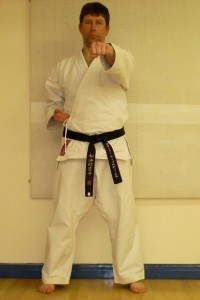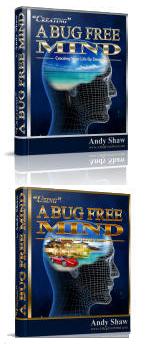I am honoured to have recently had a second article published in Shotokan Karate Magazine. The article entitled  Using “Whip” Technique, is available on this website for those who do not subscribe to Shotokan Karate Magazine. Although it primarily relates to Shotokan Karate, it should be relevant to other styles too.
Using “Whip” Technique, is available on this website for those who do not subscribe to Shotokan Karate Magazine. Although it primarily relates to Shotokan Karate, it should be relevant to other styles too.
I have recently received an email from the editor John Cheetham informing me that the article has been well received and forwarding a letter from a reader. I thought this letter raised some interesting points.
I have therefore responded to this letter and asked John Cheetham’s permission to reproduce the letter and my response here on this website. John has kindly agreed, so here below is the readers letter:-
Dear John, I read your magazine (issue 111) with great pleasure, as always!
Time over time you manage to find interesting aspects and trigger discussions that are of great value. I thank you for that!In issue 111, the article by Charlie Wildish especially caught my attention!
Even though I am just a humble 1st kyu, I have often thought about this method of whipping the techniques. I found it to be very fast, and also I felt as if it took less energy to perform.However, I was only really able to perform this somewhat successfully with a Gyaku Zuki (Reverse Punch). I have not really been able to apply the whipping effect in other techniques. Therefore, I wonder if you could ask Charlie to go into more detail of how to apply this for other techniques, including kicks.
The other thought that comes to my mind is that of possible injury during training.
First, I am thinking about how easily I could hurt my own joints due to the fact that I am performing such extremely fast movements with less tension on my muscles. What I am trying to say is that it is probably very difficult to fully control the movements and the stopping point (moment of impact) every time. So I fear for my elbow.
The other worry that I have is with respect to injuries due to possible blocks that are performed against my whipped technique. In order to perform the whipping effect, I have to keep my arm ( e.g. Gyaku Zuki) extremely
relaxed. I hate to imagine, what a hard block, such as Soto Uke would do to my arm and elbow at that point (i.e. before I maximize the tension at the end).Maybe these are stupid questions, but as, I too, am getting older, I am continuously thinking of ways to train healthily. As you get older, every
injury takes longer to heal, and coming back after a pause of training due to injury gets harder.If you don’t want to publish this, I would be very grateful to hear your thoughts on this via Email. And also, maybe you could forward my questions to Charlie?
Thank you and best regards,
Frank Kretzschmar
(Bad Soden, Germany)
And my response to Mr Kretzschmar:-
Dear Mr Kretzschmar
Thank you for the positive feedback about my article.
Starting with hand techniques, you should be able to apply the whipping feeling to techniques other than Gyaku Zuki (Reverse Punch). The main points are:
- Focus on generating movement from the hips.
- Keep the torso as relaxed as possible so as to allow the hips to slightly lead the shoulders, thus creating the wave effect through the body (the wave culminates in the whip).
- Keep the hand/arm from moving as long as possible until the “wave” reaches the shoulders, then the hand will feel like it is being thrown rather than having to thrust it forward.
One of the easiest techniques (other than punching) to feel the “wave” is Age Uke (Rising Block), so maybe focus on that for a while till you have it, then put it into other techniques.
Kicks can use the whip too, but it is a bit more difficult. As power comes from the hips, it helps to pull the foot in as close as possible to the hip before releasing it to the target, (hence the emphasis on raising the knee).
Creating the wave through the body is about sequence. You will probably have to practice this slowly if it is not coming easily; but first raise the knee and bring the foot in as tight to the hip as possible without creating too much tension. Then move the hips/foot as one unit, then release the foot when the hip nears the completion of its movement. If you’re interested, I have actually produced a DVD which might help you understand this a bit better at: http://bunkaijutsu.com/store/
This is just brief overview (which I might expand on later).
I understand your concerns about the lack of muscular tension to protect your joints, but ironically you are less likely to damage your joints this way. With this relaxed technique, the joints actually open up lightly letting more fluids in which actually keep them lubricated. This is a Tai Chi principle. When somebody uses too much kime/tension, they actually pull the 2 sides of the joint together which more likely to create wear and tear. It also makes for a less efficient punch as the fist is actually being pulled slightly back by your own muscles rather than releasing all of the energy forward into the target.
The other factor is that when you have good structure, the reaction to impact is easily absorbed by the body’s skeletal system as the bones are in the correct alignment. For a fuller explanation of this, please see my article at the back of SKM Issue 110.
As for hard blocks like Soto Uke (Outside Block), the original function of this technique was not to block straight punches. Just try sparring with a club mate for a while where one can only do straight punches and the other can only do classical blocks (Soto Uke, Uchi Uke, age Uke etc). You’ll find that the blocks simply don’t work. On top of that, in a real self defence situation, you are more likely to be attacked by swinging haymakers rather than straight punches. The creators of Karate centuries ago (who had to fight for their lives, rather than points) would not spend so much time creating “blocks” that don’t work - to defend against attacks that are not likely to used.
Therefore (coming back to your question), the only time you’re likely to be blocked with a full Soto Uke (Outside Block) is when you’re doing pre-arranged sparring when you can if you deem necessary brace yourself as you know when its coming. Having said that, even without using the whip technique, the arm should still be relaxed when moving (only tensing on impact) and the Soto Uke should intercept it before it reaches that impact (or its too late - you’ve already been hit). Therefore, with respect, you should be used to being blocked with your arm relaxed.
I do not think that you are asking stupid questions at all. Quite the opposite, as we get older we are wise to take our age into account, it would be stupid not to 🙂
I am luckily that my own Sensei, Paul Mitchell, is very aware of this subject. One of his sayings is “young people should use the full dexterity of their bodies, older people should do it properly”. An example of what he means by this is that high kicks are good for youngsters to develop their bodies, but not effective for self defence, so older people should keep their kicks to a practical height (doing it properly for self defence).I hope this answers your questions to your satisfaction.
Best Regards
Charlie
Please leave your own feedback below if you found this useful, or if you would like to add your own knowledge to my answer. I always welcome input from others.



